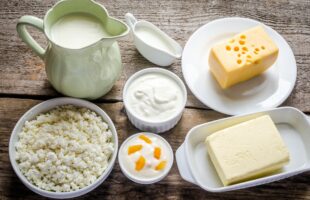
Courtesy of BENEO
By: Christian Philippsen, Managing Director, BENEO Asia Pacific
In recent years, more and more consumers are becoming health conscious, evidenced by them paying closer attention to the back of their food labels. This development isn’t a result of the recent pandemic but rather a consistent trend due to increasing consumer curiosity about where their food comes from and how it’s made his awareness is also reflected as one of the top 10 trends for 2023 by FMCG Gurus referred to as “eagle eyes,” as consumers are on the hunt for transparency when it comes to nutritional profiles of products.
This development has fuelled the rise of clean-label products, which can be described as “natural, contain only real ingredients, are synthetic-free, and are also free from artificial ingredients.” According to a recent survey, roughly 78 percent of consumers worldwide expressed that they find clean-label products appealing after understanding their definition4.
With demand for clean-label items soaring, regional manufacturers can jump on the opportunity by creating cleaner, more natural food products for consumers. However, this transition may challenge them on the taste and texture front.
The Starch of a More Natural Journey
To answer consumer demand and overcome technological challenges, food producers can tap into ingredients such as rice starch to get ahead of the competition. What differentiates it from other starches is its small granule size of 2 to 8 μm, allowing the creation of creamy textures. This natural ingredient can be used in dairy and confectionery products, baked goods, and convenient foods such as soups and sauces, and it helps to increase shelf-life and to improve product stability. One challenge for manufacturers is maintaining optimal functionality under varying processing conditions ranging from gentle pasteurization to more severe retorting in neutral and acidic foods.
Fortunately, there are already solutions to this problem. For example, BENEO’s range of rice ingredients includes a functional native rice starch. Thanks to a unique thermal production process, this ingredient offers enhanced technical properties to help achieve performance levels competing with those of chemically modified starches. It is the company’s first high-performing rice starch that qualifies for both natural and clean label status worldwide.
Due to its unique molecular structure, the functional native rice starch provided excellent freeze-thaw stability and increased viscosity build-up without causing syneresis, further increasing the product’s shelf life. In addition, it allows food manufacturers to create appealing textures and excellent product stability even in demanding production scenarios. Compared to other clean-label starches, BENEO’s functional native rice starch performs well under harsh processing conditions, such as low pH, high temperature, or shear.
Enhancing Taste and Texture with Rice Ingredients
An additional benefit of rice ingredients is their neutral taste which does not modify the flavour of the end product. At the same time, rice starch can enhance the texture of various products. For example, it can optimise crunchiness in cookies or create a creamy, smooth, and full-bodied mouthfeel in fat-reduced products, such as bakery fillings and dairy products, thus meeting consumers’ demands of a clean(er) label product that doesn’t compromise taste nor texture. Also, since rice is a familiar staple food from nature, ingredients derived from this raw material allow for more transparent, understandable food labels.
With the clean label market set to grow even further, developing more natural, delicious foods will be the perfect opportunity for food manufacturers in Asia Pacific to expand their product lines. In alignment with the market trend, BENEO has recently opened an additional rice starch production line in Belgium, increasing capacity by 50 percent and making available clean-label rice ingredients. Through ingredients like functional native rice starch, manufacturers can combine technical benefits with appealing textures and labels.








